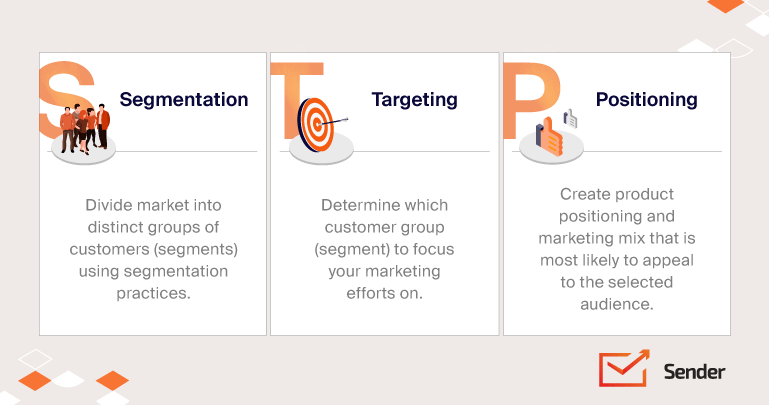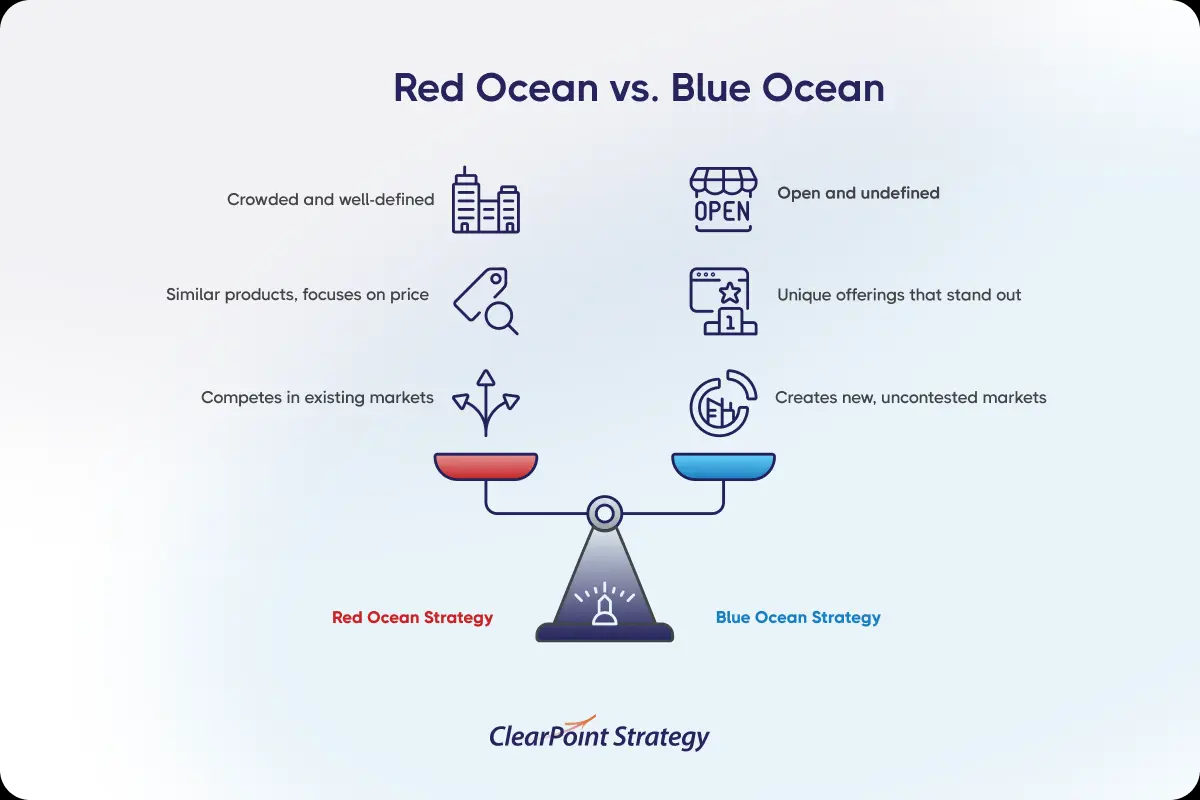Have you ever felt like your marketing efforts just aren’t hitting the mark? You’re not alone. Many businesses struggle to connect with their target audience, leading to wasted resources and missed opportunities. But there’s a solution—mastering market segmentation.
By understanding and applying effective segmentation strategies, you can transform your marketing approach, ensuring that your messages resonate with the right people at the right time. In this guide, we’ll walk you through the essential steps to segment your market effectively, helping you unlock better targeting, increased engagement, and a higher return on investment.
- Effective market segmentation is essential for tailoring marketing efforts to specific customer needs, leading to improved engagement and ROI.
- Understand the different types of segmentation—demographic, geographic, psychographic, and behavioural—to target your audience more precisely.
- Use a step-by-step approach to identify your target markets, gather relevant data, and create detailed customer personas.
- Leverage segmentation data to align your marketing messages and campaigns with the specific needs of each segment.
- Address common challenges in market segmentation, such as data collection difficulties and maintaining segment relevance, to ensure accurate targeting.
- Utilise advanced tools and technologies, like CRM systems and AI-driven analytics, to enhance your segmentation efforts.
Overview of Market Segmentation and Its Core Components
At its foundation, market segmentation is the process of dividing a broad target audience into distinct, approachable groups. This segmentation involves creating subsets based on a range of factors, including demographics, needs, priorities, common interests, as well as psychographic or behavioural criteria. The purpose of these divisions is to gain a deeper understanding of the target audience and deliver more precise marketing efforts.
Why Is Market Segmentation Essential?
Market segmentation is the strategic division of a broad market into smaller, more defined subgroups, where each subgroup shares specific characteristics such as age, gender, income, geographical location, lifestyle, and buying behaviour. This practice enables businesses to refine their approach by tailoring their marketing mix to suit the unique needs of each segment.
By segmenting and targeting markets, businesses can derive valuable insights into the varying preferences and behaviours of their customer base. This deeper understanding empowers companies to customise their products, services, and overall marketing strategies to ensure they effectively engage each group.
Segmentation is a crucial strategy as it enables businesses to pinpoint and prioritise the most lucrative growth opportunities. By concentrating resources on those segments that best align with their value proposition, companies can boost customer satisfaction, expand their market share, and ultimately enhance profitability.

What Matters Most?
From our experience, focusing on niche markets typically creates stronger brand loyalty, which enables more effective engagement. Clients often discover that understanding psychographics alongside demographics reveals motivations that drive purchasing decisions. Moreover, clear differentiation in brand messaging tailored to distinct segments fosters deeper connections, enhancing positioning in the market.Get In Touch
What is the relationship between market segmentation market targeting and product positioning?
Market segmentation, targeting, and positioning, often referred to as STP, are integral steps in formulating an effective marketing strategy:
- Market segmentation: This step divides the broader market into subgroups of individuals who exhibit similar needs, wants, and characteristics.
- Targeting: Following segmentation, targeting involves selecting which of these customer segments presents the greatest potential for the business, directing marketing efforts accordingly.
- Positioning: Positioning determines how a business wants its product or brand to be perceived in the marketplace relative to competitors. It’s about finding the right message to ensure that the product resonates with each targeted segment.

How Are Market Segmentation, Targeting, and Positioning Interconnected?
The STP model (Segmentation, Targeting, Positioning) is a structured approach to identifying the right audience and determining the most effective way to communicate with them. Together, these three components ensure that the marketing mix is built on a foundation of research and strategy, leading to more efficient resource allocation and improved engagement.
What Is the Difference Between Market Segmentation, Targeting, and Positioning?
- Segmentation: Consumers are divided into subsegments based on shared characteristics or behaviours.
- Targeting: From these segmented groups, businesses select the most attractive ones that align with their goals and offerings.
- Positioning: This involves determining how the business wants each target segment to perceive its product or brand and crafting strategies to position the product accordingly.
Why Are Segmentation, Targeting, and Positioning Critical in Marketing?
Segmentation, targeting, and positioning allow marketers to develop a detailed understanding of their customers and the broader market landscape. With a clear STP framework in place, businesses can communicate their value proposition more effectively, ensuring that they address specific customer needs and ultimately provide greater value. This structured approach not only improves marketing efficiency but also strengthens the alignment between business offerings and customer expectations, driving long-term success.
What are the 4 target market segments?
1. Segmenting and Targeting Markets Based on Firmographics
Segmenting and targeting markets through firmographics is a widely utilised method, akin to how B2C marketers apply demographic data. Firmographic segmentation classifies businesses by shared attributes such as company size (measured by number of employees or annual revenue), geographical location (e.g., inner-city London versus rural Wales), industry, and even the types of technologies used within those companies.
The appeal of firmographics lies in the relative ease and low cost of gathering this data, making it a cost-effective strategy for segmentation. Additionally, firmographic information is highly practical for sales teams, as it allows them to easily understand and communicate the specifics of a target customer segment. For example, knowing that a company fits into a certain size bracket or operates within a particular industry can help sales teams tailor their pitch with precision.
However, firmographic segmentation does have its limitations. Much like the use of demographics in B2C, firmographics alone cannot predict exact buying behaviours. Just because a company has 2,000 employees or operates in the tech sector doesn’t automatically indicate that it has a need for your cloud service offering. While helpful for narrowing down prospects, firmographics should be combined with other segmentation strategies for greater accuracy and effectiveness.
Source: Hubspot
2. Segmenting and Targeting Markets Based on Tiering
Customer tiering is a more strategic method of segmentation that evaluates how closely a customer aligns with your business goals. By segmenting and targeting markets through tiering, you can assess the potential value a customer or lead brings over the duration of the relationship, prioritising those that promise the highest return on investment. This approach is particularly effective in identifying high-value accounts and aligning your resources to secure them.
In recent years, many companies have advanced this method through account-based marketing (ABM). ABM is a targeted approach where both sales and marketing focus their efforts on a carefully selected group of accounts believed to yield the highest potential value. Instead of spreading campaigns across a wide array of leads, ABM enables businesses to maximise their return by focusing on a shortlist of high-impact opportunities. By integrating tiered segmentation with ABM, companies can optimise their marketing spend and sales efforts, ensuring they engage the most valuable prospects with tailored campaigns.
3. Segmenting and Targeting Markets Based on Customer Sophistication
Segmenting by customer sophistication involves categorising your audience based on their level of understanding regarding the problem your product or service solves. This method allows marketers to tailor messaging that speaks directly to the customer’s current knowledge and experience, ensuring relevance at every touchpoint.
Consider a company providing cloud storage solutions. An unsophisticated customer might still rely on physical storage systems, unaware of the complexities and benefits of digital alternatives. For this segment, your messaging would need to focus on educating them about why cloud storage is essential. Conversely, a sophisticated customer already using cloud solutions from a competitor would require a different approach. Here, your messaging should highlight the unique advantages your service offers over the incumbent provider, focusing on differentiation rather than basic education.
This segmentation strategy ensures that each customer receives information that resonates with their specific needs and level of awareness, increasing the chances of engagement and conversion.
4. Segmenting and Targeting Markets Based on Behaviour
Behavioural segmentation is a powerful tool, particularly for demand generation marketers aiming to maximise the value of their existing customer base. By analysing how customers interact with your product or service, you can uncover two critical insights: whether there is potential to expand the customer’s current solution or if the customer is at risk of churning.
In practice, behavioural segmentation enables you to target customers who may be primed for upselling opportunities or to identify early signs of dissatisfaction that could lead to churn. For example, if a customer consistently uses only a fraction of your service’s capabilities, there may be potential to introduce additional features or services that align with their evolving needs. Conversely, a drop in engagement might indicate a customer is losing interest, signalling the need for a retention strategy to re-engage them before they churn.
By carefully segmenting and targeting markets through behavioural data, businesses can create personalised strategies that either nurture customers toward further purchases or implement retention efforts to minimise churn.
Source: Epsilon
How to Identify Your Target Markets: Top Tactics and Techniques
Your target market represents the core group of customers whose needs, values, and desires align closely with what your business provides. These are the individuals who are already in search of the solutions you offer. Identifying this market isn’t about guesswork; it’s about conducting thorough research to deeply understand who these people are, what drives their purchasing decisions, and how you can best reach them.
Effective segmenting and targeting markets involves delving into customer motivations. The more precise your understanding, the better equipped you’ll be to tailor your products, services, and marketing strategies to meet their needs.
Target Market vs. Target Audience
Many marketers often confuse target market and target audience, using the terms interchangeably. While they share similarities, these concepts differ. Your target market is the broader group of consumers or businesses who share common characteristics that make them an ideal fit for your offering. In contrast, your target audience is a subset of this group, specifically identified for certain marketing campaigns.
For instance, when running an advertising campaign, identifying the target audience becomes crucial. This group is the intended recipients of the campaign, and their engagement will be key to its success.
Steps for Identifying Target Markets
1. Analyse Your Offering: Start by analysing what problems your products or services solve. This clarity will help you identify the exact type of customers they appeal to. Be as specific as possible. For example, a landscaping company based in a city might primarily appeal to busy professionals who have little time to maintain outdoor spaces or those who don’t have access to large out-of-town garden centres.
Understanding these niches is vital as it helps position your business with a unique edge in a competitive landscape. The finer the details you uncover, the better you’ll be at segmenting and targeting markets.

2. Assess the Competition: Next, study the competitive landscape. This is where online tools can play a significant role in gathering competitive intelligence. Investigate who your competitors are, the products or services they offer, their pricing structures, and how they differentiate themselves in the market.
Creating a SWOT analysis (Strengths, Weaknesses, Opportunities, Threats) for both your business and your competitors will provide a clearer picture of your market positioning. Knowing your Unique Selling Proposition (USP) is especially critical when operating in crowded or highly competitive markets. It’s essential to be clear on why your product stands out and how it adds unique value to your customers.
3. Obtain Data: Choosing the right market segments also requires backing up your insights with hard data. There are multiple approaches to gathering this, and both primary and secondary sources can be highly valuable.
A. Gather Survey Data
One effective method for understanding your target market is through surveys. These surveys can be disseminated through email campaigns, newsletters, or by partnering with a market research firm. Collect demographic and psychographic data to correlate responses with specific customer groups, helping you pinpoint promising segments that align with your business goals.
B. Draw on Existing Data
For businesses offering products or services that are already available in the market, leveraging existing data is crucial. Analyse what demographic groups are purchasing similar products and identify trends such as purchase timing and product preferences. There is a wealth of data available online that can provide both a macro and micro view of your potential customers, allowing you to make data-driven decisions when segmenting and targeting markets.
Our Tactical Recommendations
Integrating account-based marketing with sales strategies allows for precise targeting of high-value prospects, leading to improved conversion rates. It’s essential to avoid over-segmenting your audience; instead, create actionable segments that align with your overall business goals. Lastly, leveraging community feedback provides invaluable real-time insights that can drive both innovation and market relevance.Get In Touch
Top Tools to Help You with Segmenting and Targeting Markets
How to Choose Customer Segmentation Tools
When selecting a tool for segmenting and targeting markets, it’s essential to involve key teams from across the business. The marketing, product, and data teams should collaborate to ensure the chosen tool meets not only your immediate marketing goals but also your long-term business objectives based on the product roadmap. A good tool must be easy to integrate within your existing data infrastructure while being cost-effective and scalable to fit your budget.
Prioritise Performance Tracking Over Time
A vital feature to look for in a customer segmentation tool is the ability to track performance over time. It should either come with its own descriptive analytics or seamlessly integrate with your existing analytics platforms. By monitoring how different segments perform, you’ll be able to assess shifts in customer retention, lifetime value, and identify which groups have the potential for long-term engagement.
Tracking performance also helps you spot patterns across your segments. For instance, are certain customer groups more likely to make purchases during specific times of the year? Identifying trends like seasonal shopping habits or preferences for online vs. in-store purchases will enable you to refine your strategies for segmenting and targeting markets more effectively.
Look for Tools That Enable Personalised Marketing Experiences
While segmentation is crucial for identifying and categorising customer groups, it’s equally important to activate this data effectively in your marketing efforts. Some advanced tools, like Personas, can go beyond segmentation by triggering automated marketing workflows as soon as a customer meets the criteria for a specific segment.
This capability allows businesses to deliver highly personalised campaigns in real time, ensuring that your messaging is timely and relevant to each customer’s unique journey. When choosing your tools for segmenting and targeting markets, look for ones that offer these kinds of personalised marketing capabilities to enhance customer engagement.
Best Practices for Implementing Customer Segmentation Tools
Once you’ve selected a customer segmentation tool, the next step is to ensure that it’s implemented in a way that maximises the benefits of segmentation. Here are some best practices to follow:
- Identify Relevant Customer Segments: Every business is unique, and what’s relevant for one may not apply to another. Carefully evaluate how best to segment your customer base to drive meaningful results.
- Create Actionable Segments Using Behavioural Data: Customer behaviours offer critical insights into how they interact with your product or service. Start by grouping customers based on their behaviour patterns, as action-oriented segmentation is more likely to translate into revenue.
- Measure and Refine: As you implement and refine your segmentation strategies, continuously look for areas of improvement. The creation of new segments, based on evolving customer behaviours, presents opportunities to adjust your approach and capitalise on untapped markets.
Top Tools for Segmenting and Targeting Markets
1. Meltwater Consumer Intelligence
Meltwater offers a powerful solution for understanding your audience through its vast reservoir of real-time data points. Its consumer intelligence suite combines social listening, AI, data science, and natural language processing to dig deep into online conversations, revealing valuable insights about your target audience.
While traditional segmentation focuses on what you already know, Meltwater goes beyond by uncovering hidden connections and raising questions you may not have considered. It analyses data trends objectively, opening up new perspectives and helping businesses refine their strategies for segmenting and targeting markets.
2. Reveal
Reveal is much more than a simple customer segmentation tool; it’s a comprehensive customer intelligence platform. Using RFM segmentation (recency, frequency, monetary value), Reveal categorises customers based on their purchasing behaviour, one of the strongest indicators of future buying habits and customer loyalty. This segmentation approach also provides insights into customer lifetime value.
With Reveal, businesses can track when customers buy (recency), how often they buy (frequency), and how much they spend (monetary value). This allows you to concentrate on the most valuable segments while keeping an eye on emerging opportunities. The platform also highlights patterns, such as what attracts people to make their first purchase and what causes them to stop. This insight extends to identifying your most popular brands, giving you a clear picture of what’s working in your portfolio.
3. Salesforce
Salesforce is one of the most widely recognised customer relationship management (CRM) platforms, trusted by marketing, sales, commerce, service, and IT teams alike. Its AI and machine learning capabilities allow for precise audience segmentation based on a broad range of factors, including:
- Demographics
- Behaviours and lifestyles
- Devices used
- Exposure to ads
- Customer journey
Salesforce’s Audience Studio enables businesses to pull in data from multiple sources, providing a detailed view of their audience. By integrating data from across all channels, Salesforce helps you uncover patterns in customer behaviour, which in turn refines your approach to segmenting and targeting markets.
4. Survicate
Survicate focuses on feedback-driven segmentation, helping businesses gather detailed insights from their audience. This tool is particularly useful when you want to personalise marketing messages based on customer responses. It supports various feedback formats, including:
- Net Promoter Score (NPS)
- Customer Satisfaction Score (CSAT)
- Customer Effort Score (CES)
Each feedback type is tailored to different targeting options, helping you better understand your customers’ experiences and refine your approach to market segmentation.
5. Heap
As customer journeys become increasingly complex and nonlinear, Heap’s focus on digital journeys becomes essential. Heap tracks every user interaction, from clicks and taps to page views, helping businesses understand how customers navigate their websites and engage with their products.
Heap provides deep insights into customer behaviour, identifying friction points and surfacing trends that might otherwise go unnoticed. This data allows businesses to make informed adjustments aimed at increasing conversions, all within the framework of segmenting and targeting markets.
6. Mailchimp
Mailchimp is a well-known all-in-one marketing platform designed primarily for small businesses. Its segmentation options are robust, allowing businesses to filter their audience based on factors such as:
- Subscriber data (e.g., automation activity, campaign activity, postcard activity)
- Personal details (e.g., changes in personal information, language, location)
- Lifetime value
- Likelihood to purchase again
- Behavioural data (e.g., app and website engagement)
Additionally, Mailchimp offers predictive insights and the ability to create custom tags and fields, providing businesses with unique ways to segment their audiences for more personalised marketing campaigns.







